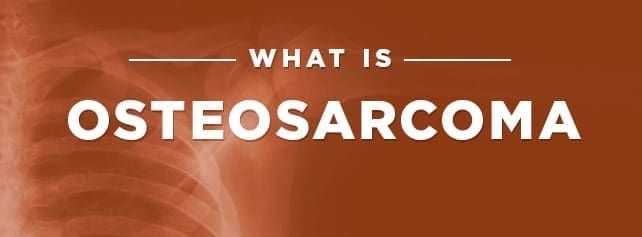Osteosarcoma
Osteosarcoma is the most common type of bone cancer in children (the second being Ewing’s sarcoma) and accounts for about 3% of pediatric cancer cases. Most other types of cancer start elsewhere in the body and then spread to the skeleton, however, osteosarcoma is one of the few types of cancer that begin in the bones.
Osteosarcoma is a type of bone cancer that begins in the cells that form the bones. Our bones can be separated into two main types: “flat” and “long.” Flat bones protect the brain and other organs, and long bones support the legs and arms. Osteosarcoma can occur all over the body, but typically develops in the growing ends of long bones (called the “metaphysis”), and mostly occurs in the areas that form the knees. The second most common site of osteosarcoma is at the ends of the upper arms around the shoulders.



